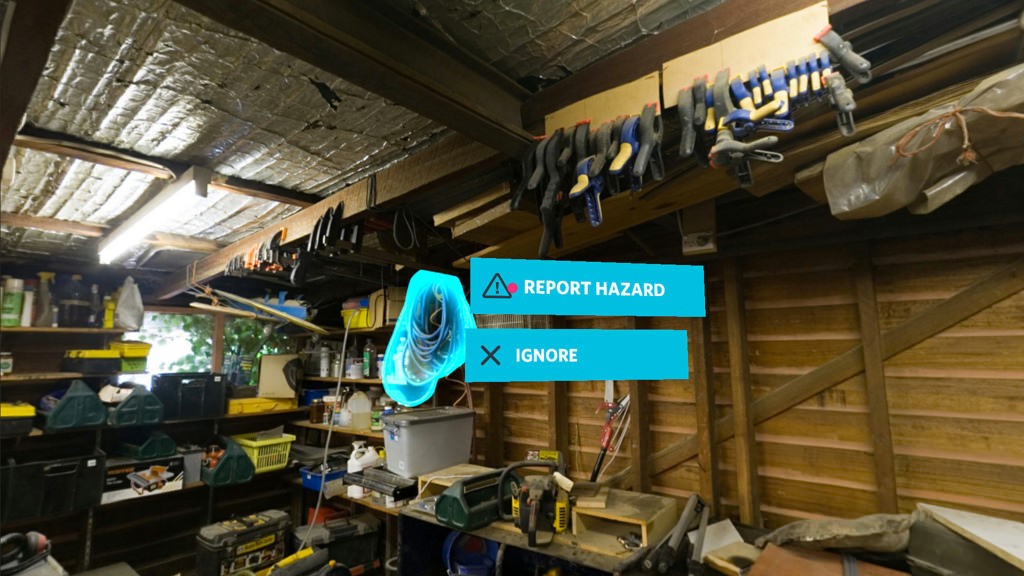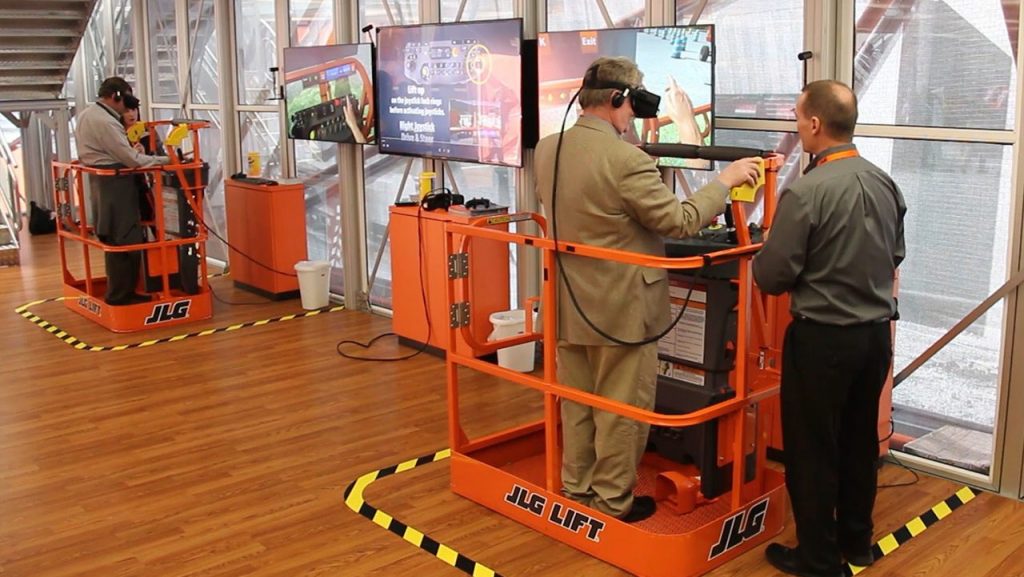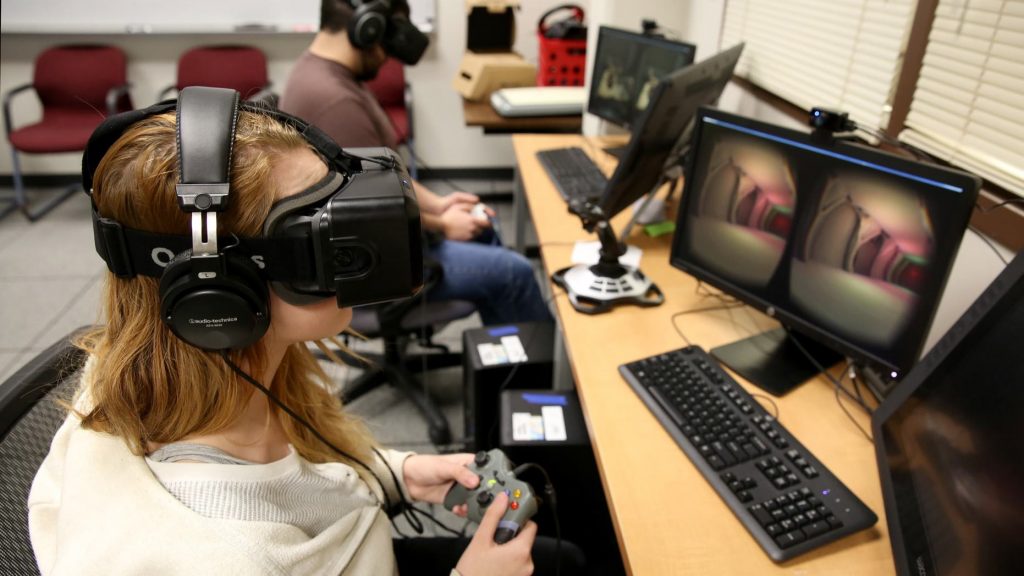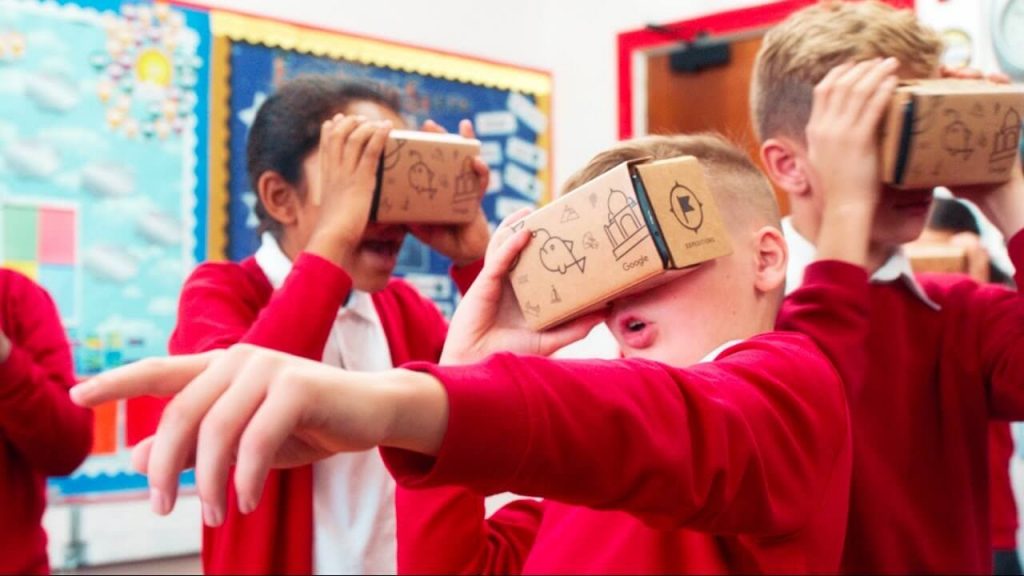Using new technologies for pedagogical purposes is more than just a fad. It seems to be quickly imposing itself as the future of education. In fact, most professionals working in training and education are already well-versed in various fields such as virtual reality and are now looking for ways on how to implement it into their regular learning process.
Blended learning, the incorporation of technology into traditional brick-and-mortar classrooms, is a perfect instructional model for experimenting with VR. Retained learning often occurs from actual experiences, making VR-based education, and training compelling. VR is a completely immersive experience, where users wear VR goggles and can’t see anything that’s not on a screen.
Increase knowledge retention through experiencing
Integrating new technologies in training is part of a broader movement to help learners gain experience. The goal is clear: challenge pedagogical techniques to develop a more experiential way of learning.
Of course, this idea has been around for some time. The so-called learning-by-doing approach could be seen as the forbearer of experiential learning. Knowledge can be acquired from books…but the experience cannot. Learning the fundamentals is one thing, applying them to theoretical situations is another – applying them to real-life situations is harder still.
The goal of experiential learning is to help students apply knowledge and to create an experience during the training session. Indeed, virtual reality tools enable students to come into contact with a more dynamic representation of reality than a traditional case study. Dynamic role play, or situational learning, could enhance teaching by requiring students to problem solve in an immersive environment. One in which the consequences of each action could be tested on a trial-and-error basis.

How to implement VR into your learning process
The most successful implementations of virtual reality into the learning and training process are through blended learning. Blended learning allows you to deliver training through a number of different methods. These training methods are designed to complement each other and work in tandem to achieve overall learning objectives and outcomes. It allows:
- Students to learn at their own pace
- Background knowledge to be learned before practical
- Variety of training methods and techniques
- Makes training more enjoyable
- Develops confidence
- Increases pass rate
- Resources to be freed up for other students
- Travel times to be reduced
- Costs to be reduced e.g. waste materials, tools, equipment, utility bills
When implementing virtual reality into this process, the students would first consume more traditional content on their laptop. After that, they would jump into virtual reality to do a hands-on portion of the training. This works well because it gives the learning a break to get out of virtual reality as the first few experiences can be exhausting before they would become more acclimated. It’s also much more comfortable to read a lot of text on a laptop than in VR.
Blended learning method: Face-to-face learning + Computer simulations
| Face-to-face learning | Computer simulations |
| Good for consuming traditional information | Good for simulating acutal experiences |
| Increases amount of knowledge passes | Increases knowledge retention |
Where can you get the best ROI on VR?
The best place to start with when including virtual reality in your learning management system are areas of training that are most expensive or offer the highest value problems. Typically, organizations would get their best return on investment by including virtual reality into:
- Equipment training – letting employees train on expensive machines without the chance of any physical damage.
- Safety training – letting employees experience dangerous situations in a safe environment.
- Soft skills – helping employees improve their soft skills that are typically hard to practice.





